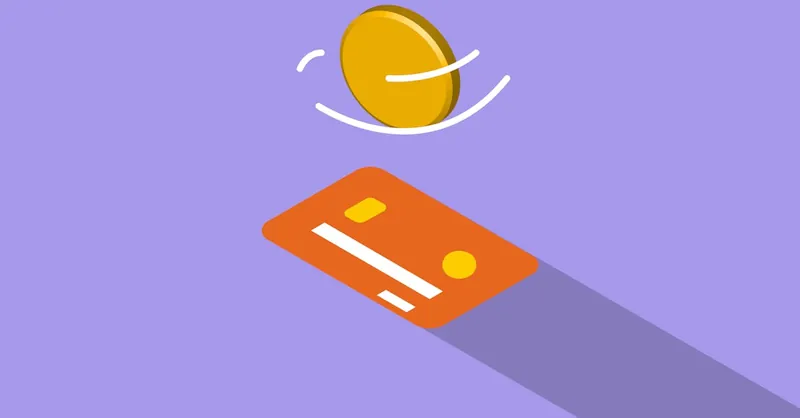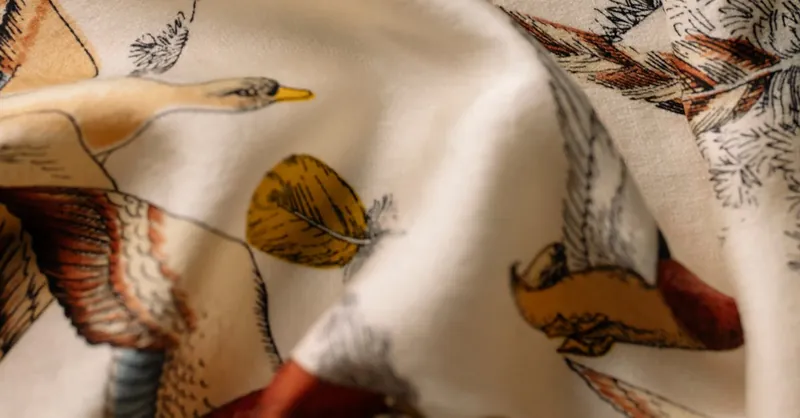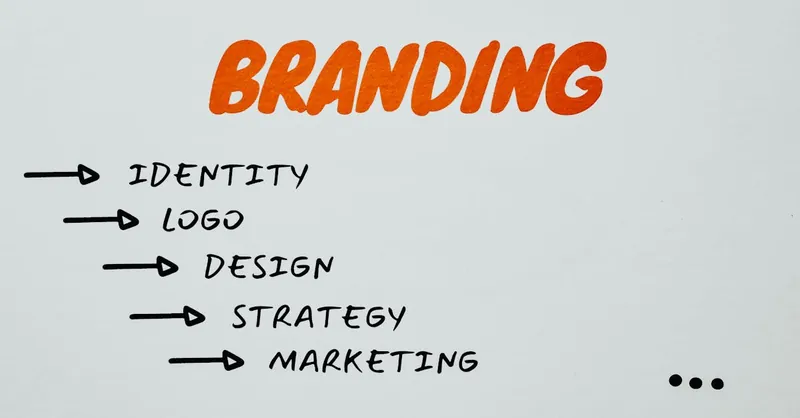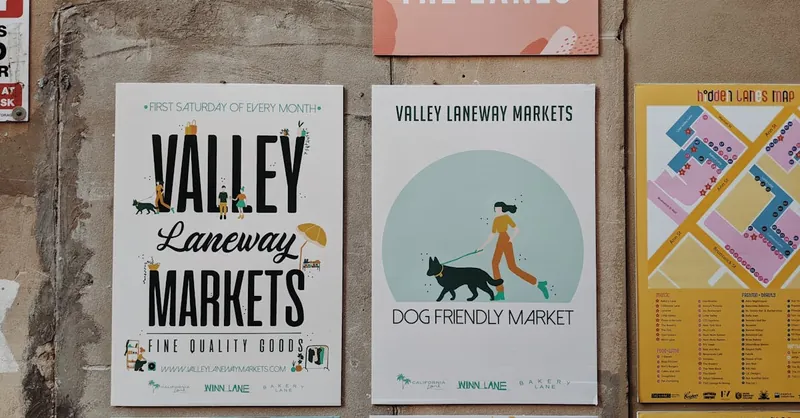Top Side Hustles for Graphic Designers to Boost Income
Category: Side Hustles
Unlock Flexible Side Hustles for Graphic Designers
If you're a graphic designer juggling projects but craving extra income on your own terms, you're in the right place. You already know the creative grind and the unpredictability of client work, so finding dependable, flexible side hustles that match your skills without burning you out is key. Maybe you’ve tried a few gigs but want a curated, practical guide tailored specifically to graphic design talents that fit your schedule and elevate your earnings. This post dives into proven side hustle ideas crafted for designers like you—creative, tech-savvy, and hungry for financial growth beyond typical freelancing. We cut through the noise and focus on side hustles that maximize your design expertise without requiring massive upfront investment or time commitments. Whether you want passive income streams, quick gigs, or long-term projects, you'll discover ideas that flex with your lifestyle and skill level. Read on to unlock actionable strategies to diversify your income, sharpen your portfolio, and work smarter—not harder—in your spare time.
- Unlock Flexible Side Hustles for Graphic Designers
- Freelance Graphic Design Platforms: How to Leverage Popular Marketplaces to Land High-Paying Side Projects
- Creating and Selling Digital Products: Build Passive Income with Your Graphic Design Skills
- Print on Demand Ventures: Design for Apparel, Accessories, and Home Decor Without Inventory Hassles
- Offering Branding and Logo Packages: Crafting Efficient, Creative Solutions for Startups and Small Businesses
- Teaching and Online Workshops: Share Your Graphic Design Expertise and Earn on Your Schedule
- Social Media Content Creation and Management: Design Engaging Visuals That Drive Business Growth
- Stock Photography and Illustration Sales: Tips for Contributing Original Artwork to Stock Sites for Passive Revenue
- Crowdsourced Design Contests: Boost Exposure and Earnings with Strategic Participation
- Collaborations with Local Businesses: Flexible Design Partnerships That Pay
- Niche Design Services: Offer Specialized Solutions for Higher Pay and Targeted Audiences
Freelance Graphic Design Platforms: How to Leverage Popular Marketplaces to Land High-Paying Side Projects
As a graphic designer looking to boost your income without sacrificing flexibility, tapping into freelance graphic design platforms like Upwork, Fiverr, and 99designs can be a game-changer. These marketplaces connect you with clients worldwide seeking everything from logo design and branding to packaging and digital illustration—projects perfectly suited to your unique style and expertise. The key to landing high-paying side projects on these platforms lies in crafting a standout profile, showcasing your strongest portfolio pieces, and strategically bidding on gigs that align with your skills and desired income level.
Here’s how to get started and maximize your earnings on these sites:
-
Optimize Your Profile
Your profile is your digital storefront. Use a professional photo, write a clear, engaging bio centered on your design strengths, and include relevant keywords like “branding expert,” “vector illustration,” or “UI/UX design” to improve search visibility. -
Showcase a Targeted Portfolio
Upload only your best and most relevant work that highlights the niches you want to pursue. Tailor your portfolio to reflect recent trends and client needs to attract serious buyers willing to pay premium rates. -
Strategic Proposal Writing
When applying to projects, customize each proposal to address the client’s specific requirements. Highlight how your skills solve their problem and suggest value-added ideas to set yourself apart. -
Leverage Platform Features
Each platform has unique tools like Fiverr’s gig packages or 99designs’ design contests. Use these to upsell your services or gain exposure, but focus first on building strong client reviews and repeat business.
By actively engaging on these platforms with a focus on professionalism and niche expertise, you can secure consistent, high-paying side projects that fit your schedule and allow you to grow your income steadily—without the unpredictability of solely seeking local clients or cold pitching.

Image courtesy of George Milton
Creating and Selling Digital Products: Build Passive Income with Your Graphic Design Skills
One of the most rewarding and scalable side hustles for graphic designers is creating and selling digital products. By designing items like templates, fonts, graphics, and printables, you can generate a steady stream of passive income that works for you 24/7, long after your initial effort. Marketplaces such as Etsy, Creative Market, and Gumroad make it easy to reach a global audience looking for ready-made design assets to streamline their own projects, whether they’re small business owners, bloggers, or fellow creatives.
Why Digital Products Are a Smart Side Hustle for Designers
- Leverage your existing skills: Use your proficiency in Adobe Creative Suite, Procreate, or other tools to craft high-quality digital assets without starting from scratch.
- Create once, sell repeatedly: Unlike freelancing gigs, digital products don’t require ongoing client interaction, allowing you to focus on new projects or personal work.
- Build a personal brand: Consistently selling well-designed digital goods helps to establish your reputation as a go-to creator in your niche, opening doors for collaborations and custom commissions.
- Flexible scaling: Start small with simple products like social media templates or wedding invite designs, then expand into more complex offerings like fully customizable brand kits or unique typefaces.
Popular Digital Products to Design and Sell
-
Graphic templates
Social media kits, business cards, resumes, and presentation templates that customers can easily edit in programs like Canva or Photoshop. -
Fonts and typography
Custom hand-drawn or digital fonts tailored for branding projects, decorative uses, or logos. -
Illustrations and icon sets
Collections of vector art, patterns, or themed illustrations perfect for websites, apps, and print materials. -
Printables
Calendars, planners, wall art, party decorations, and stickers that buyers can print at home or at professional labs.
Getting Started Tips
- Research trending design styles and high-demand niches on marketplaces to ensure your products attract buyers.
- Pack your listings with detailed descriptions, clear preview images, and keyword-rich titles so your products rank higher in search results.
- Promote your digital storefront on social media and your portfolio website to drive traffic and build a loyal customer base.
By investing time upfront to craft polished, in-demand digital products, you create opportunities for earning passive income while sharpening your design skills and expanding your online presence. This side hustle perfectly complements freelancing and project-based work, giving you greater financial freedom and creative control over your side gigs.

Image courtesy of Monstera Production
Print on Demand Ventures: Design for Apparel, Accessories, and Home Decor Without Inventory Hassles
If you want to combine your graphic design skills with a truly hands-off sales model, Print on Demand (POD) services like Redbubble, Printful, and Teespring open a world of opportunity. POD platforms let you upload your original artwork and instantly start selling it on a variety of products—think t-shirts, hoodies, phone cases, tote bags, mugs, and even home decor like pillows and wall art. The best part? You never handle inventory, packaging, or shipping. The platform manages the entire fulfillment process, freeing you up to focus on what you do best: designing.
Why POD is Perfect for Graphic Designers as a Side Hustle
- No upfront inventory costs: You don’t need to buy or store any products. Each item is printed only when someone orders it.
- Wide product variety: Experiment with various formats like apparel, accessories, and home goods to find your best-sellers.
- Passive income potential: Set your prices and collect royalties on every sale while the POD service takes care of production and delivery.
- Scalable and time-flexible: Upload new designs whenever you want, making this side hustle ideal for squeezing into your spare time.
Tips for Success in POD Design
- Research trending niches and styles to create designs that resonate with specific audiences—whether it’s minimalist typography, vibrant illustrations, or quirky humor.
- Optimize your product listings with clear, catchy titles, keyword-rich descriptions, and attractive mockups to improve visibility in platform searches and Google results.
- Promote your POD store through social media, design portfolios, and even targeted ads to drive traffic and increase sales volume.
- Test and diversify your designs by uploading multiple variations or product types—some designs perform better on apparel, others on home decor.
By leveraging POD platforms, graphic designers can effortlessly create an extra revenue stream that blends creativity with automation—no shipping headaches, no inventory risk, and an ever-growing online storefront powered by your unique artwork. Whether you’re seeking flexible side income or a low-commitment way to experiment with products, POD ventures offer an accessible gateway to monetizing your design talents at scale.

Image courtesy of cottonbro studio
Offering Branding and Logo Packages: Crafting Efficient, Creative Solutions for Startups and Small Businesses
One of the most lucrative and scalable side hustles for graphic designers is offering comprehensive branding and logo packages tailored to startups and small businesses. These clients often need a cohesive visual identity but lack the time or resources to hire large agencies, making packaged branding solutions an ideal fit for your flexible side hustle hustle. By combining your creativity with efficiency, you can deliver high-value branding services that include logo design, color palettes, typography guidelines, and brand collateral—helping businesses establish a memorable and professional presence quickly.
How to Create Effective Branding and Logo Packages
- Define Clear Package Tiers
Structure your offerings into tiers—basic, standard, and premium—allowing clients to choose based on their budget and needs. For example: - Basic: Logo design + color palette
- Standard: Logo + color palette + typography and usage guide
-
Premium: Full branding suite including logos, business cards, social media templates, and brand guidelines
-
Standardize Your Process for Efficiency
Use branded templates, mood boards, and workflow checklists to streamline the project lifecycle from discovery through delivery. This saves time and ensures consistency across projects without sacrificing creativity. -
Include Revisions and Deliverables Clearly
Specify the number of logo concepts, rounds of revisions, and final deliverables (file formats, brand guide PDFs) upfront. Clear communication enhances client satisfaction and prevents project scope creep. -
Market Your Packages to Ideal Clients
Focus on early-stage businesses, solopreneurs, and local startups by promoting your branding packages on platforms like LinkedIn, Instagram, and entrepreneurial forums. Highlight how your designs provide them a professional edge to attract, retain, and grow their customers.
By crafting packaged branding and logo solutions, you not only position yourself as a trusted design partner but also create predictable, repeatable workflows that maximize your earning potential without overwhelming your schedule. These packages appeal to startups looking for fast, effective branding, enabling you to deliver creative impact with professional efficiency—a perfect side hustle formula for today’s graphic designers wanting consistent income on their own terms.

Image courtesy of Eva Bronzini
Teaching and Online Workshops: Share Your Graphic Design Expertise and Earn on Your Schedule
If you’re passionate about graphic design and love helping others grow their creative skills, teaching online courses and workshops is a powerful side hustle that offers both flexibility and scalable income. Platforms like Skillshare, Udemy, and Teachable provide you with the infrastructure to reach thousands of eager learners worldwide, while webinars and live workshops allow for interactive, engaging teaching experiences. By packaging your graphic design knowledge into structured lessons—whether it’s mastering Adobe Illustrator basics, niche techniques like lettering or motion graphics, or industry insights on client workflows—you establish yourself as a design authority and create a steady stream of revenue beyond one-off freelance projects.
Why Teaching Graphic Design Works as a Side Hustle
- Flexible scheduling: Record courses whenever you have time or schedule live sessions during your free hours, making this hustle ideal for balancing with client work.
- Passive and active income streams: Earn royalties from evergreen courses or charge premium rates for exclusive live workshops and personalized coaching.
- Build authority and expand your network: Teaching amplifies your personal brand, attracts new clients, and opens doors to collaborations and speaking opportunities.
- Leverage existing skills: Use your hands-on expertise and design portfolio to create compelling course content without heavy upfront costs.
How to Get Started
- Choose your niche: Focus on in-demand topics that match your strengths, such as logo design, UX/UI principles, vector art, or Photoshop tricks.
- Plan your curriculum: Break down lessons into digestible modules and practical exercises that keep learners engaged.
- Select the right platform: Research the fee structures, audience size, and marketing support of platforms like Skillshare, Udemy, or create a course on your own website using tools like Teachable.
- Promote your courses: Use social media, email newsletters, and your design portfolio to drive traffic and enrollments.
Teaching graphic design through online courses and workshops not only diversifies your income but also helps you scale your expertise sustainably. With minimal upfront investment and access to a global market, this side hustle empowers you to earn well while doing what you love—sharing creativity on your own terms.

Image courtesy of Antoni Shkraba Studio
Social Media Content Creation and Management: Design Engaging Visuals That Drive Business Growth
Harness your graphic design skills to tap into the booming market of social media content creation and management, an ideal side hustle for designers seeking flexible work with consistent demand. Many small businesses, startups, and entrepreneurs struggle to produce regular, visually appealing content for platforms like Instagram, Facebook, TikTok, and LinkedIn. By offering your expertise to craft eye-catching posts, ads, stories, and branded templates, you become an invaluable partner in helping these businesses maintain a strong and cohesive online presence.
Why Social Media Content Creation is Perfect for Graphic Designers
- High demand for quality visuals: Brands recognize that compelling imagery boosts engagement and conversions, making skilled designers crucial for digital marketing success.
- Consistent, recurring work: Social media requires daily or weekly updates, providing a steady stream of projects and reliable income.
- Creative variety and scope: You can work on diverse content types including static images, animated graphics, carousel posts, promotional ads, and Instagram stories—all playing to your design strengths.
- Flexible project size and schedule: Whether you prefer producing batches of templates in advance or managing ongoing content calendars, this side hustle adapts to your availability.
How to Get Started with Social Media Content Design
-
Identify your target clients
Focus on niches where your design style fits well—such as health and wellness brands, e-commerce shops, coaches, or local businesses looking to boost their social reach. -
Build a social media content portfolio
Create themed sample posts, ads, and stories that showcase your ability to blend branding, typography, and layout for digital platforms. -
Offer packages including content planning and scheduling
Go beyond designing by proposing bundled services like monthly content calendars, caption templates, and post scheduling using tools like Buffer or Later to increase your value. -
Optimize your marketing strategy
Leverage your own social channels and design communities to share case studies and testimonials that highlight your success in growing client engagement.
By positioning yourself as a social media content creator and manager, you unlock a profitable side hustle that leverages your graphic design expertise—not only boosting businesses’ visibility but also generating consistent, flexible income. This hustle perfectly complements freelance project work by enabling you to build long-term client relationships with recurring revenue and creative satisfaction.

Image courtesy of Eva Bronzini
Stock Photography and Illustration Sales: Tips for Contributing Original Artwork to Stock Sites for Passive Revenue
For graphic designers seeking a reliable passive income stream, selling stock photography and original illustrations on platforms like Shutterstock, Adobe Stock, and iStock is a smart and scalable side hustle. These marketplaces offer millions of buyers—from marketers and bloggers to agencies—looking for high-quality, ready-to-use visuals for commercial and editorial projects. By uploading your unique photos, vector art, and digital illustrations, you can earn royalties every time your work is downloaded, creating a steady flow of income without ongoing client work.
How to Succeed in Stock Photography and Illustration Sales
-
Create Original, High-Demand Content
Focus on producing versatile, on-trend visuals that align with current design needs such as business concepts, lifestyle shots, abstract backgrounds, seasonal themes, and niche illustrations. Avoid clichés and strive for images that solve specific creative problems for buyers. -
Master Technical and Submission Standards
Stock sites have strict quality requirements including resolution, sharpness, composition, and proper keyword tagging. Ensure your files meet these standards and include detailed metadata—titles, descriptions, and relevant keywords—to improve discoverability in site searches. -
Build a Diverse Portfolio
The more varied your stock portfolio—covering different subjects, styles, and formats—the higher your chances of attracting diverse customers and earning consistent royalties. Aim for regular uploads to keep your portfolio fresh and active within the platforms’ algorithms. -
Understand Licensing and Pricing Models
Familiarize yourself with royalty structures and exclusive versus non-exclusive agreements to maximize your revenue. Some platforms offer higher commissions for exclusivity or premium content, but consider your overall income strategy before committing.
Benefits of Stock Sales for Graphic Designers
- Passive and recurring income: Upload once and earn indefinitely as your images are purchased over time.
- Flexible creative outlet: Experiment with photography and illustration styles beyond client briefs to diversify your skills and portfolio.
- Global exposure: Access a worldwide audience without the need for marketing or direct sales efforts.
- Supplement freelancing and product sales: Combine stock royalties with other side hustles for a balanced and resilient income mix.
By strategically contributing original artwork to top stock sites and adhering to their best practices, graphic designers can unlock a lucrative passive revenue stream that complements their client work and digital product ventures—empowering you to monetize your creativity on your own schedule with minimal ongoing effort.

Image courtesy of Kelly
Crowdsourced Design Contests: Boost Exposure and Earnings with Strategic Participation
For graphic designers eager to gain exposure and earn extra cash, entering crowdsourced design contests on platforms like 99designs, DesignCrowd, and CrowdSpring can be an exciting side hustle option. These contests invite multiple designers to submit concepts for client projects, such as logos, packaging, or website designs. Clients then select their favorite submission and reward the winning designer with a cash prize. While contests offer a unique avenue to showcase your creativity and attract new clients, they also require thoughtful strategy to maximize your return on investment.
Pros and Cons of Joining Crowdsourced Design Contests
Pros:
- Builds your portfolio and visibility: Winning or even placing as a finalist allows you to showcase high-profile client work and gain credibility.
- Potential for quick payouts: Contests usually offer defined prize amounts, so you know exactly what you can earn if selected.
- Diverse project variety: Contests expose you to a range of design challenges that can broaden your skills and creative approaches.
- Networking opportunities: Impressing a client via contest can lead to direct commissions or long-term collaborations beyond the contest itself.
Cons:
- Time investment with uncertain returns: Many designers submit entries without winning, which means unpaid effort that must fit into your schedule.
- High competition: Contests often attract numerous entries, making it challenging to stand out without a clearly differentiated design.
- Limited client interaction: Since client feedback may be minimal or generalized, refining your designs to their vision can be difficult.
- Potential to undervalue your work: The contest model may encourage quick, low-cost design solutions rather than thoughtful, strategic branding.
How to Participate Strategically in Design Contests
- Choose contests aligned with your style and strengths to increase your chances of success and create portfolio pieces consistent with your brand.
- Set a strict time limit for each submission to protect your productivity and avoid burnout from investing excessive hours in unpaid work.
- Study the client’s brief thoroughly and research their industry to deliver unique, targeted concepts that resonate.
- Leverage contests as marketing tools by highlighting your entries and wins on your website and social media, attracting clients who value your creativity.
- Use contests to test new ideas or styles that you might later develop into paid client work or digital products.
By weighing the pros and cons and applying a strategic approach, crowdsourced design contests can become a valuable side hustle tool—offering opportunities for financial rewards, portfolio growth, and client exposure while maintaining the flexibility essential to your graphic design side gig lifestyle.

Image courtesy of VAZHNIK
Collaborations with Local Businesses: Flexible Design Partnerships That Pay
One of the most rewarding and adaptable side hustles for graphic designers is partnering with local businesses such as stores, cafes, event organizers, and small enterprises that regularly need professional design work but may not have in-house resources. These partnerships allow you to create eye-catching flyers, menus, promotional materials, posters, and branded collateral on a flexible, project-by-project basis—perfect for fitting side income around your existing schedule.
Why Collaborate with Local Businesses?
- Consistent demand for design services: Local businesses often require updated marketing materials for seasonal promotions, events, or new product launches, providing you with ongoing opportunities.
- Build long-term relationships: Establishing trust with nearby clients often leads to repeat work and referrals, creating a stable, flexible income stream.
- Flexible timelines and scope: Unlike demanding corporate clients, local businesses value collaboration that respects your availability and can scale projects up or down depending on your bandwidth.
- Expand your portfolio with diverse projects: From branding refreshes to event posters and menus, working locally exposes you to varied design challenges, sharpening your skills and boosting your professional reputation in your community.
How to Start Collaborating Successfully
- Identify target businesses within your neighborhood or city—cafes, boutiques, co-working spaces, event planners, and wellness studios are great starting points.
- Create tailored pitches highlighting your value—explain how your design services can increase foot traffic, boost sales, or elevate their brand image with professional, affordable visual assets.
- Offer flexible packages or ala carte services so clients can choose based on budget and needs, whether it’s a single event flyer or a full promotional suite.
- Leverage in-person networking and social media marketing to connect with local entrepreneurs, attend community events, and showcase your completed projects.
- Set clear expectations and timelines to ensure smooth collaborations—outline deliverables, revision rounds, and deadlines that accommodate both parties’ schedules.
By collaborating with local businesses, graphic designers unlock a sustainable side hustle that combines creativity with community impact. This approach not only diversifies your income but also strengthens your professional network and portfolio, all while maintaining the flexibility and autonomy crucial to your creative side hustle lifestyle.

Image courtesy of Valeriia Miller
Niche Design Services: Offer Specialized Solutions for Higher Pay and Targeted Audiences
Tapping into niche design services is a brilliant way for graphic designers to boost their side hustle income by offering specialized expertise that commands premium rates. Instead of general design work, focus on areas like infographic creation, UX/UI design basics, or tailored ebook layouts that meet specific client needs and attract targeted audiences. These niche services require a blend of creative skill and strategic thinking, positioning you as an expert who delivers high-value solutions beyond standard graphic tasks.
Why Choose Niche Design Services?
- Higher earning potential: Specialized design skills allow you to charge more due to the unique value and expertise you bring.
- Focused client base: Targeted services attract clients from industries like education, tech startups, marketing firms, and authors eager for expert design support.
- Stand out from competitors: Offering niche design expertise differentiates your side hustle in a crowded market where generalist designers often compete on price.
- Flexible project scope: Many niche services, like infographic or ebook layouts, align perfectly with short-term or recurring projects that fit around your main workload.
Popular Niche Design Services to Offer
-
Infographic Creation
Design visually compelling infographics that translate complex data and information into digestible, shareable graphics for businesses, bloggers, or educational platforms. -
Basic UX/UI Design
Provide essential user experience and user interface design help for startups and small businesses launching websites or apps, focusing on wireframes, prototypes, and user flow improvements. -
Ebook and Report Layouts
Craft professional, reader-friendly ebook interiors and report templates customized for authors, coaches, and corporate clients looking to enhance their digital publications' visual appeal.
Tips for Marketing Your Niche Services
- Develop a portfolio showcasing niche-specific projects that highlight your ability to solve specialized design challenges.
- Use SEO-optimized keywords like “professional infographic design services,” “UX/UI basics for startups,” or “custom ebook layout design” in your online profiles and website.
- Target online communities and platforms where niche clients congregate, such as LinkedIn groups for marketers, author forums, or UX/UI beginner channels.
- Offer packaged services or add-ons, like infographic data visualization bundled with social media templates, to increase client value and revenue per project.
By focusing on niche design services, you not only command better pay but also attract clients with clearer needs and budgets, making your side hustle more profitable, targeted, and fulfilling—all while maintaining the flexible schedule you desire.

Image courtesy of Karolina Grabowska
